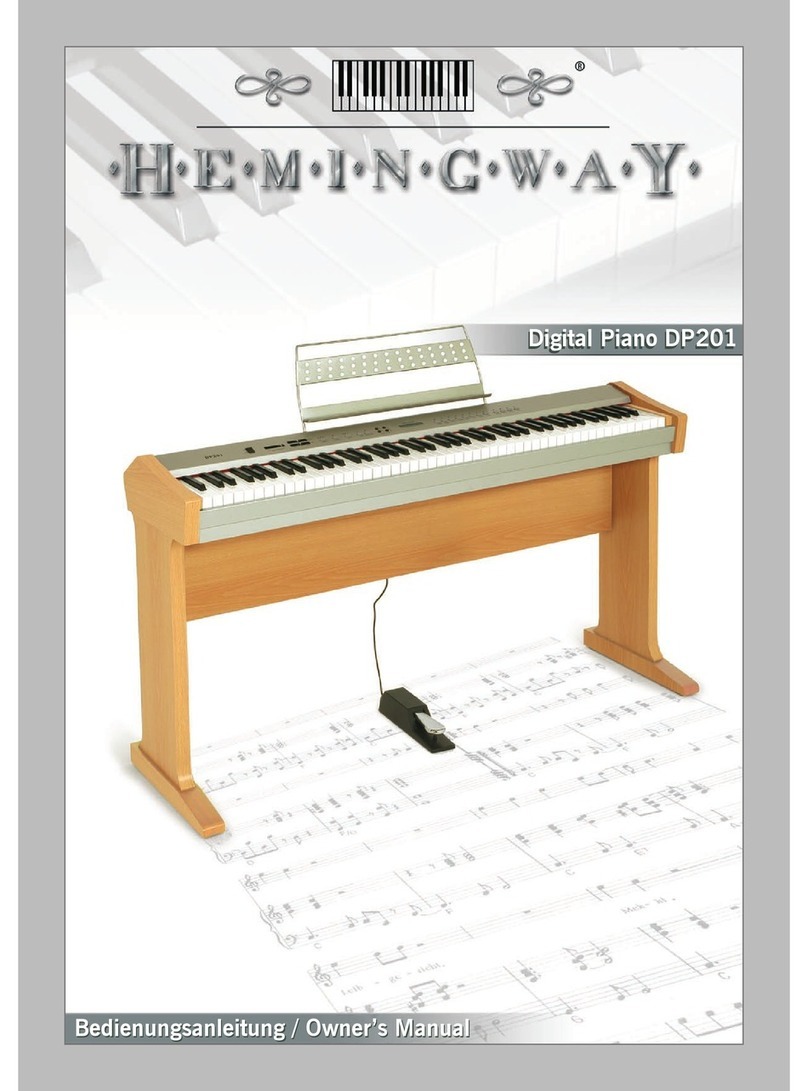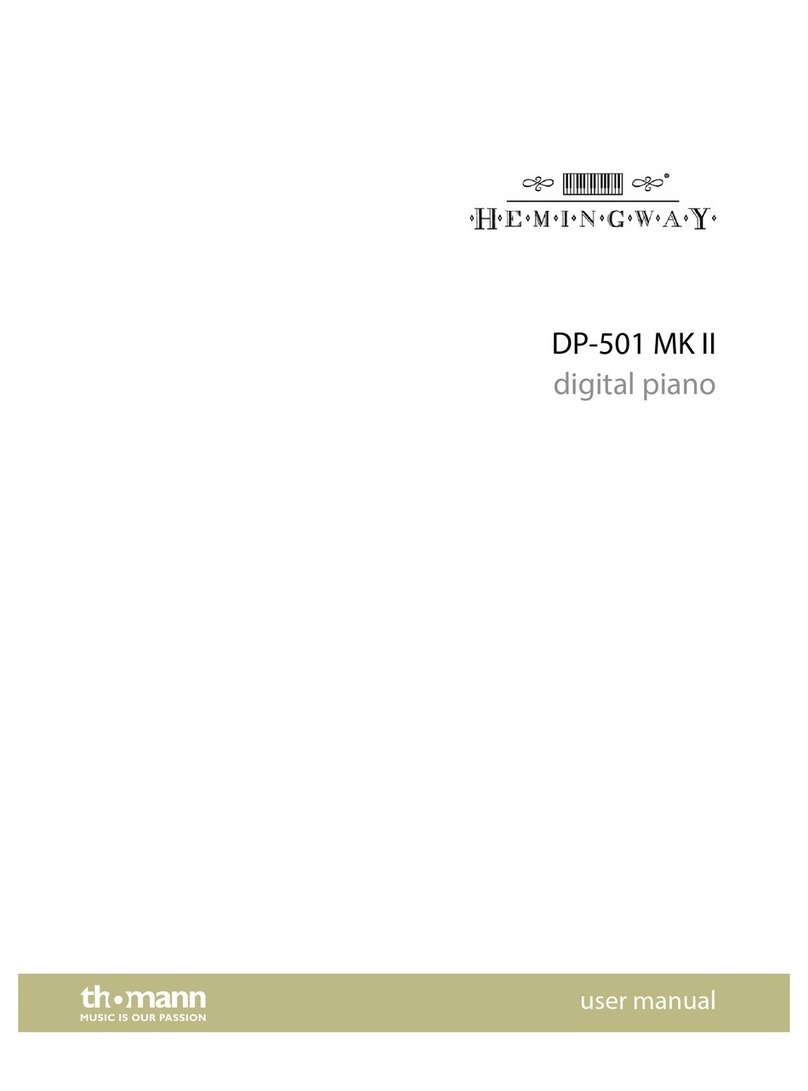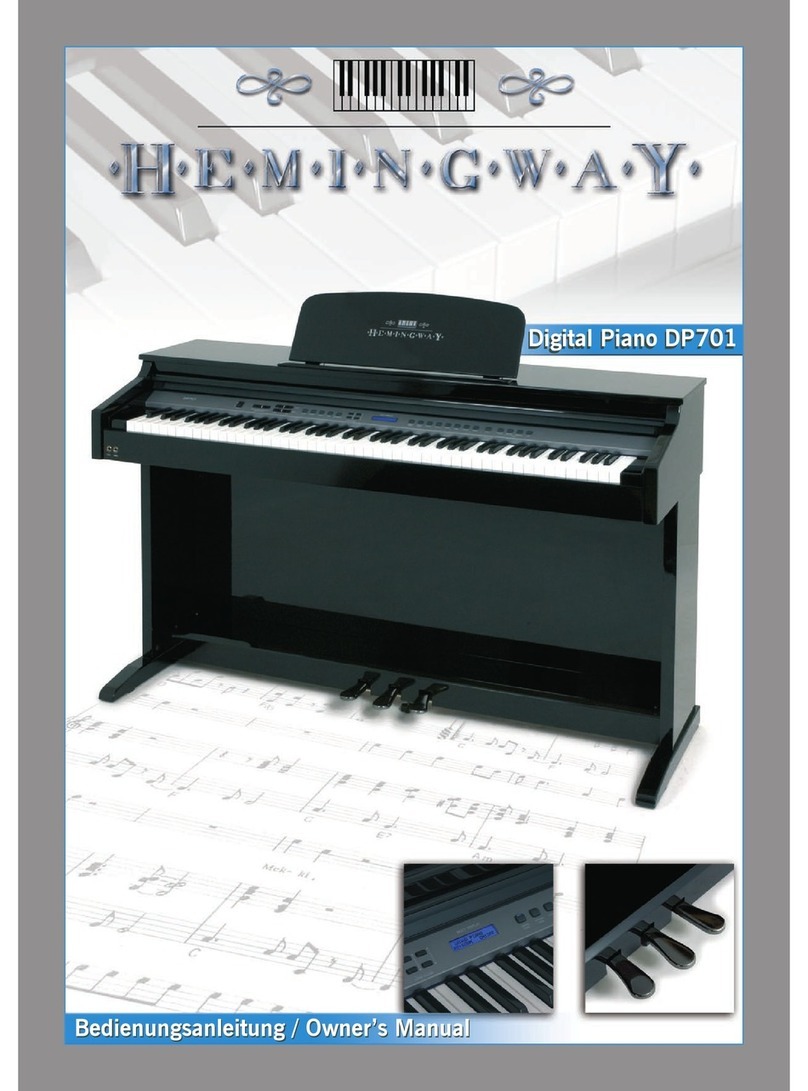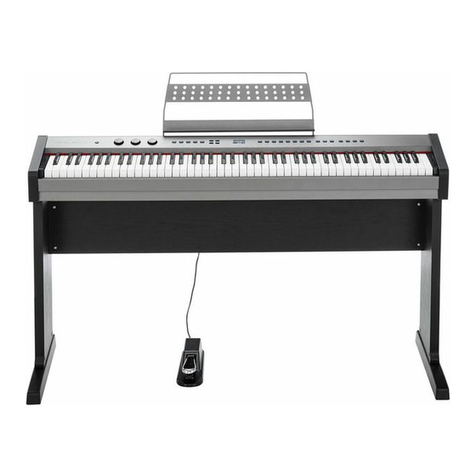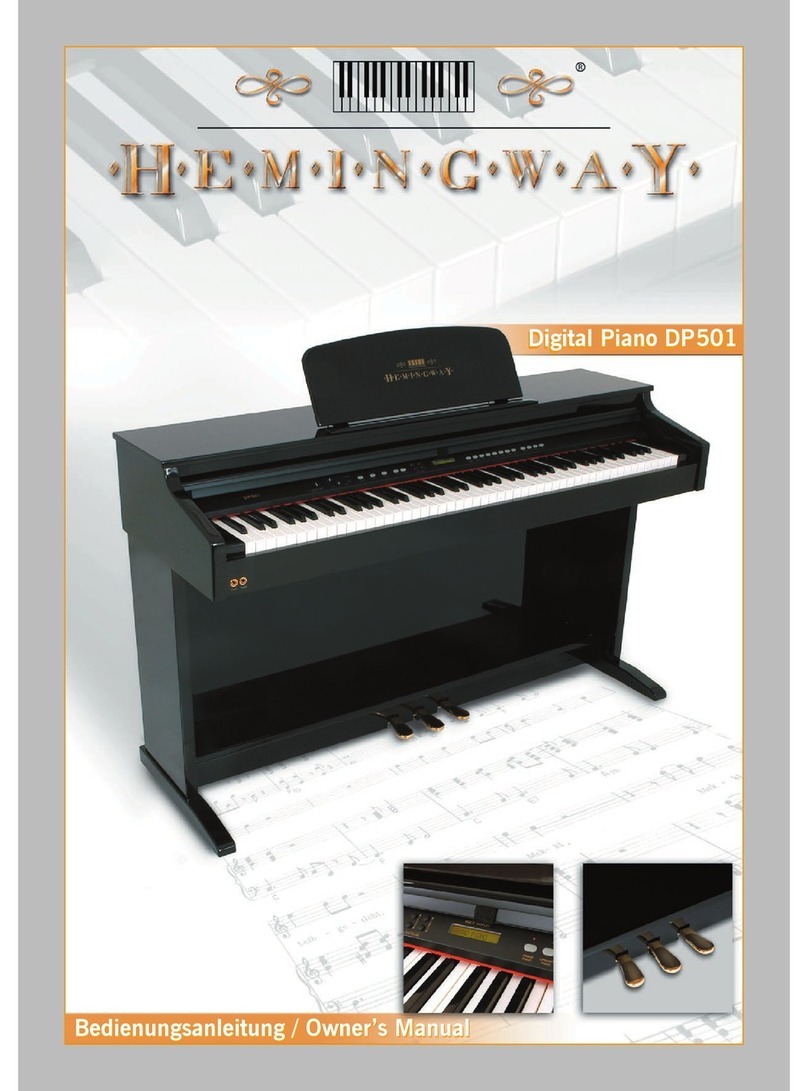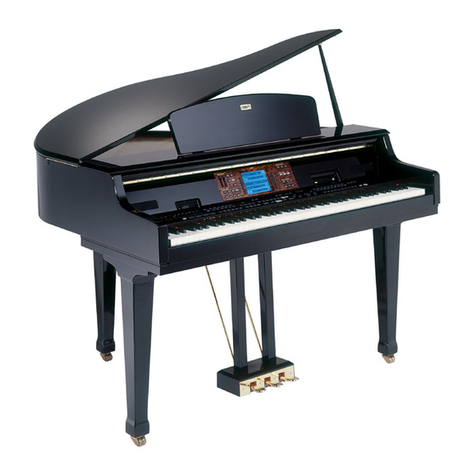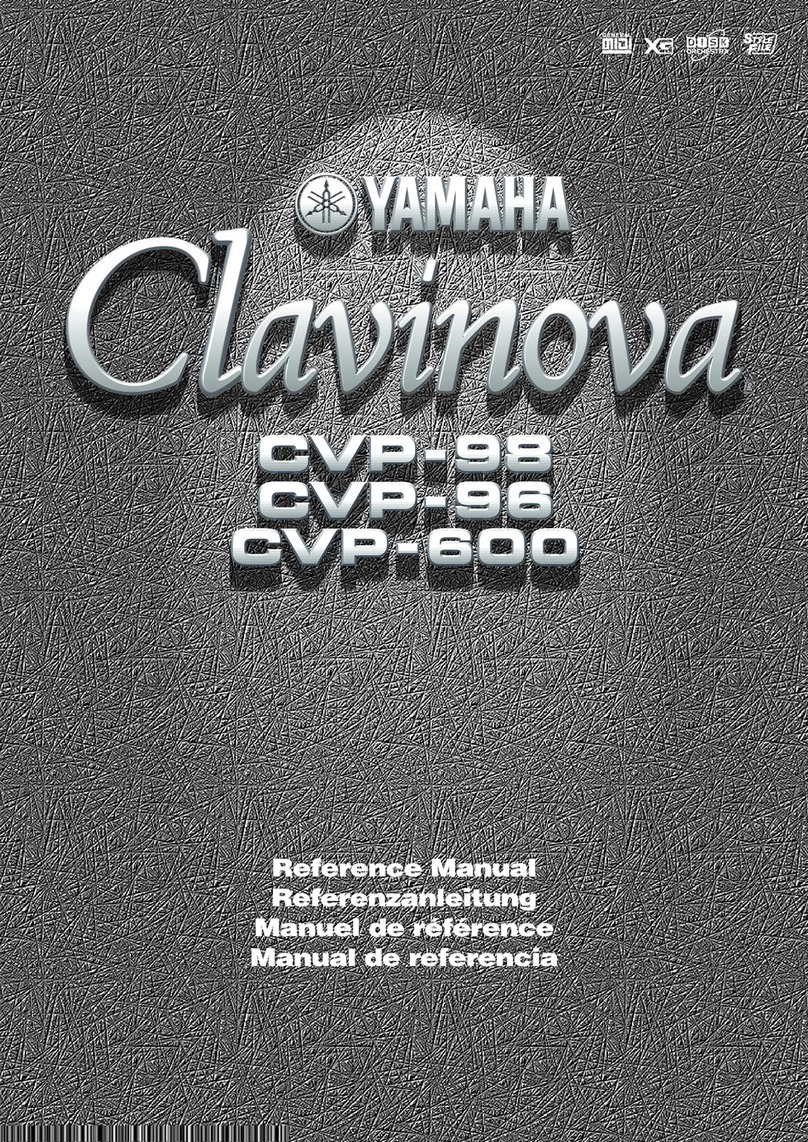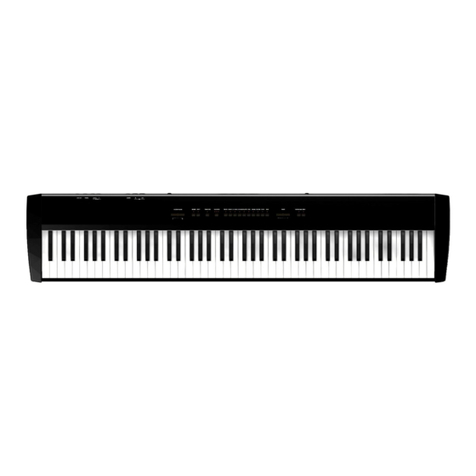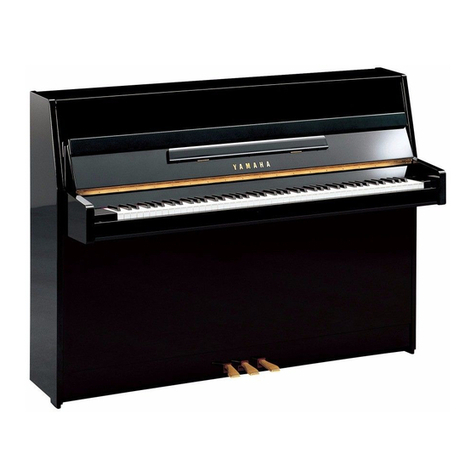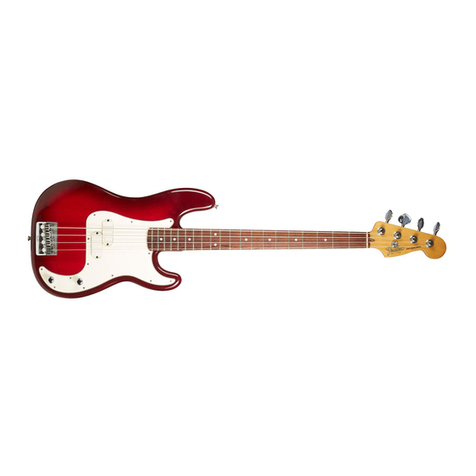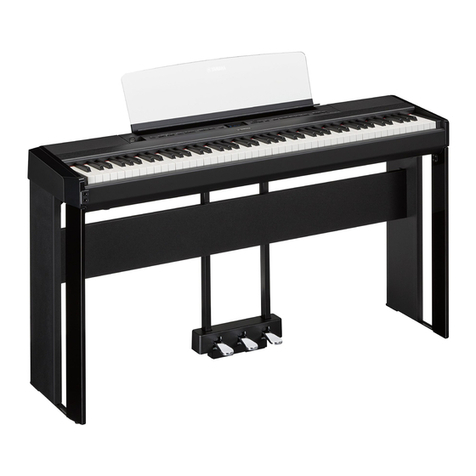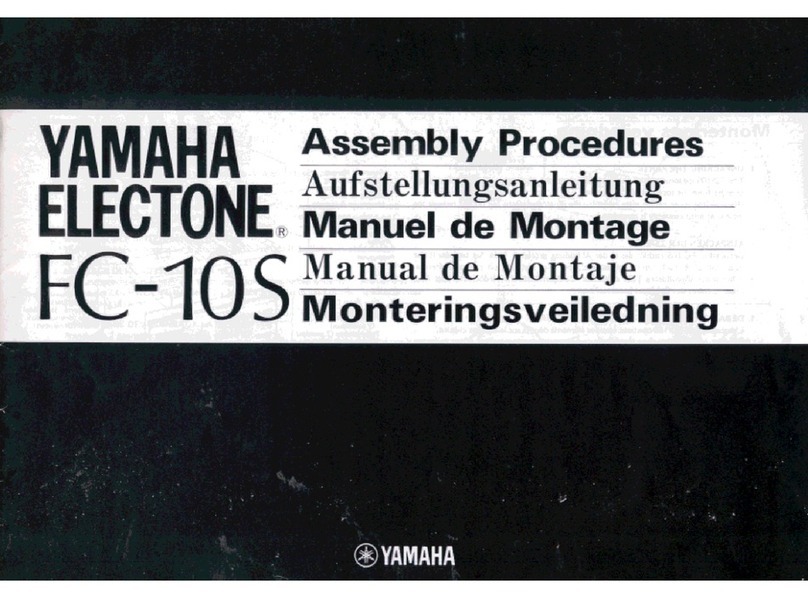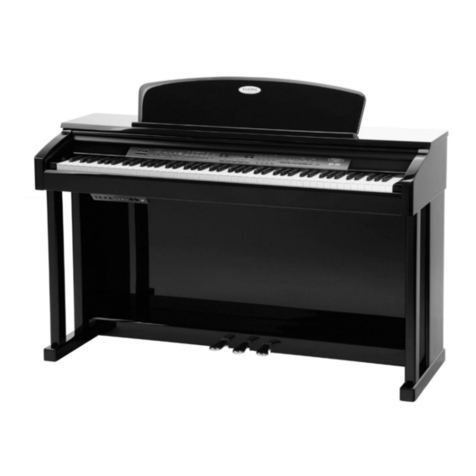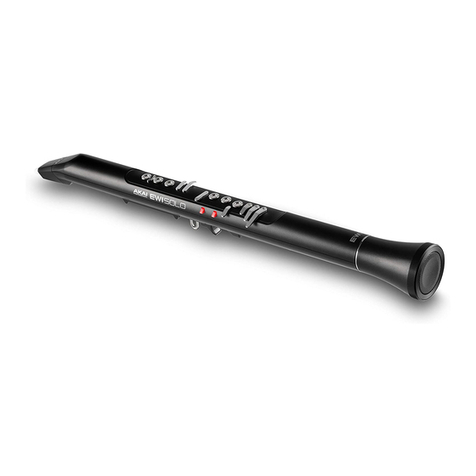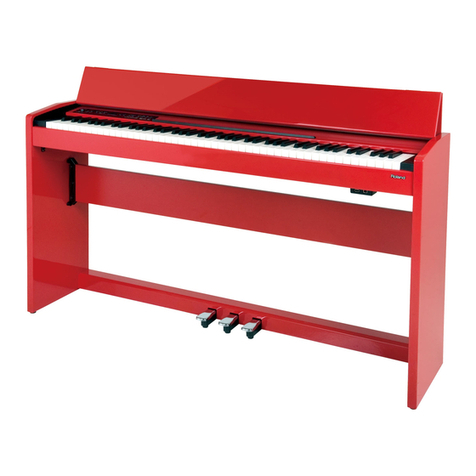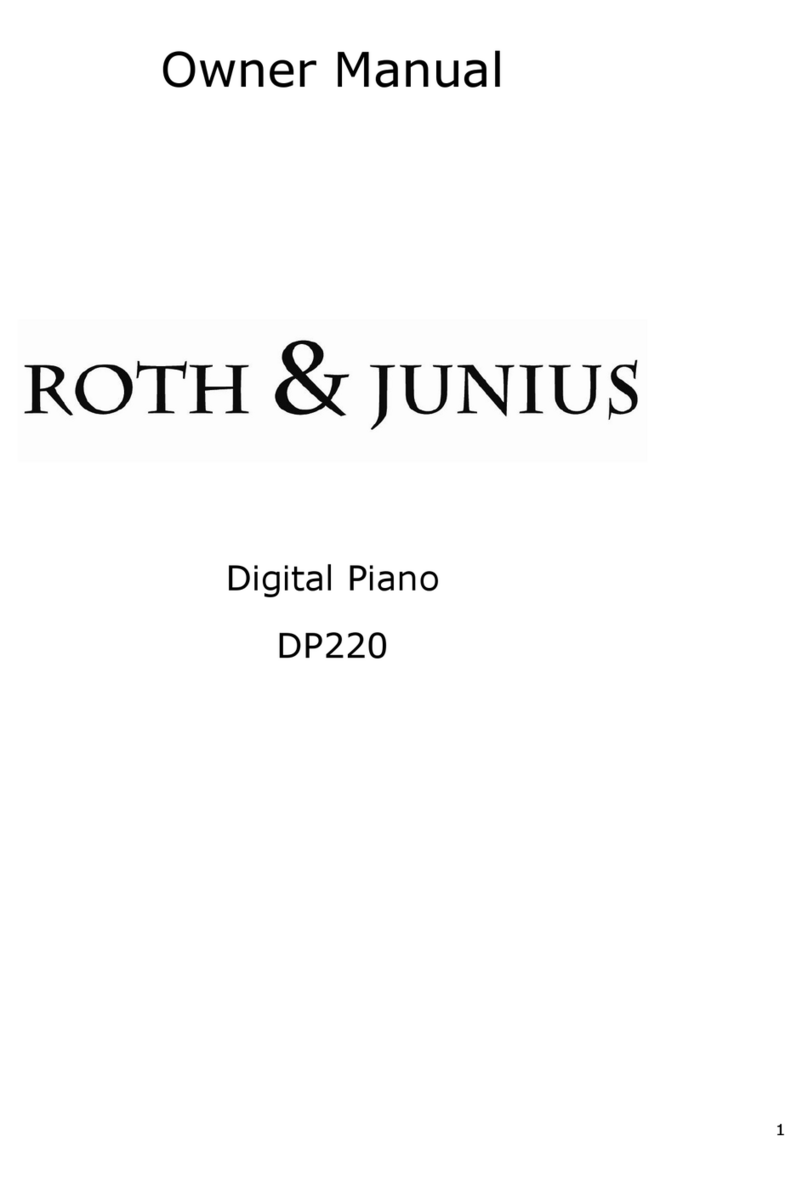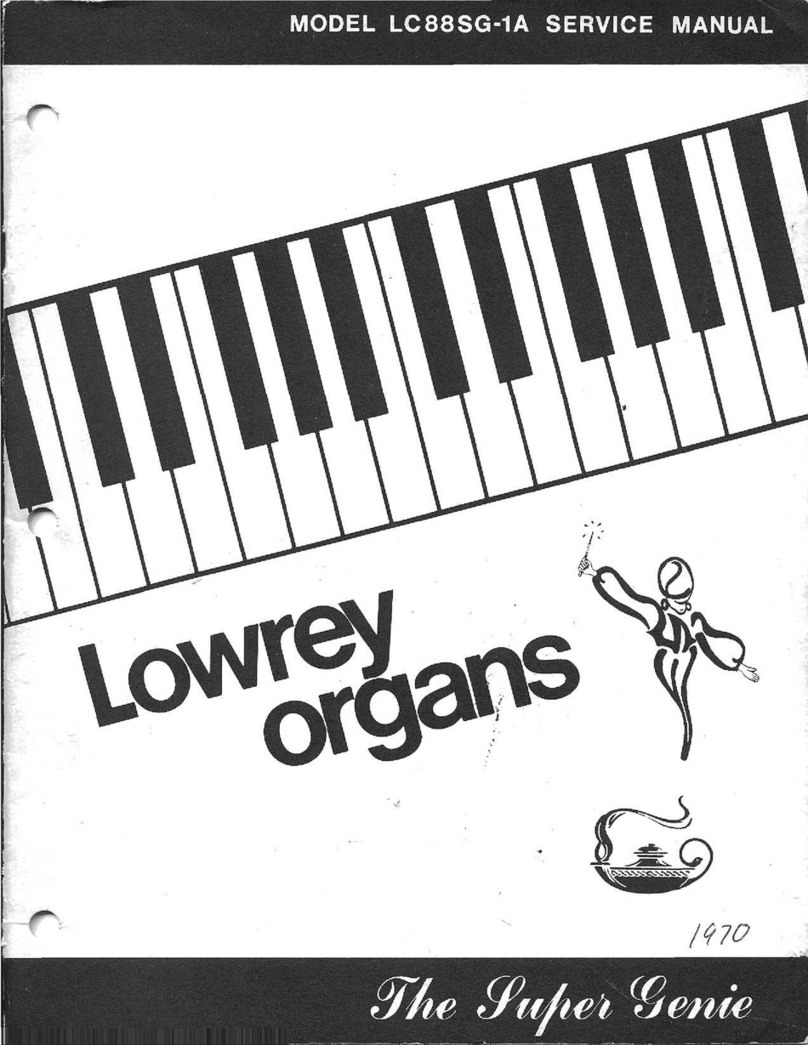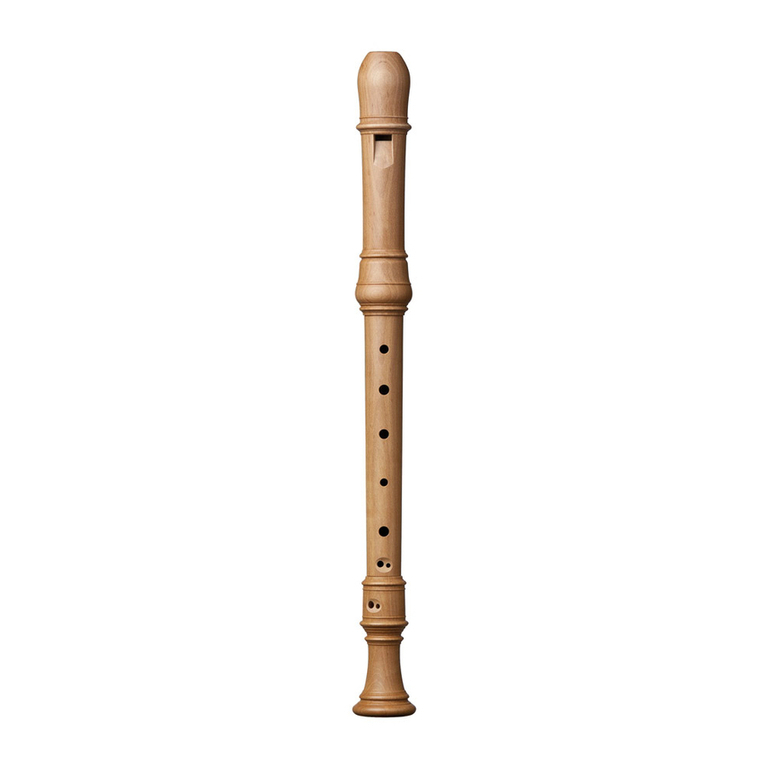Hemingway DP-701 MKII User manual

DP-701 MKII
digital piano
user manual

Musikhaus Thomann
Thomann GmbH
Hans-Thomann-Straße 1
96138 Burgebrach
Germany
Telephone: +49 (0) 9546 9223-0
E-mail: [email protected]
Internet: www.thomann.de
20.11.2015, ID: 358345

Table of contents
1 General information.............................................................................................................. 5
1.1 Further information........................................................................................................ 5
1.2 Notational conventions................................................................................................. 5
1.3 Symbols and signal words........................................................................................... 6
2 Safety instructions................................................................................................................. 7
3 Features....................................................................................................................................... 9
4 Assembly instructions........................................................................................................ 10
5 Connectivity options.......................................................................................................... 16
6 Control panel and connections..................................................................................... 18
7 Operating................................................................................................................................. 22
7.1 Turning on / off.............................................................................................................. 22
7.2 Automatic shutoff......................................................................................................... 22
7.3 Adjusting the volume.................................................................................................. 22
7.4 Setting the tone............................................................................................................. 23
7.5 Setting the touch sensitivity..................................................................................... 23
7.6 Setting up the digital piano, Function menu..................................................... 24
7.6.1 PAN effect first voice................................................................................................ 25
7.6.2 PAN effect second voice, Split mode................................................................. 25
7.6.3 PAN effect second voice, Dual mode................................................................. 25
7.6.4 Arpeggio mode.......................................................................................................... 26
7.6.5 Reverb effect............................................................................................................... 26
7.6.6 Reverb effect ratio first voice................................................................................. 26
7.6.7 Reverb effect ratio second voice, Split mode.................................................. 27
7.6.8 Reverb effect ratio second voice, Dual mode................................................. 27
7.6.9 Chorus effect............................................................................................................... 27
7.6.10 Chorus effect ratio first voice.............................................................................. 28
7.6.11 Chorus effect ratio second voice, Split mode............................................... 28
7.6.12 Chorus effect ratio second voice, Dual mode............................................... 28
7.6.13 Function pedal 1...................................................................................................... 28
7.6.14 Function pedal 2...................................................................................................... 29
7.6.15 USB speed.................................................................................................................. 29
7.6.16 Playback mode......................................................................................................... 30
7.6.17 Selecting memory bank........................................................................................ 30
7.6.18 Saving settings......................................................................................................... 30
7.6.19 Loading saved settings......................................................................................... 30
7.6.20 Activating Bluetooth interface........................................................................... 31
7.6.21 Automatic shutoff................................................................................................... 31
7.6.22 Reset to factory defaults....................................................................................... 31
8 Functions.................................................................................................................................. 33
8.1 Playing demo sequences........................................................................................... 33
8.2 Reverb and Chorus effects......................................................................................... 33
Table of contents
DP-701 MKII
3

8.3 Transposing..................................................................................................................... 33
8.4 Fine tuning...................................................................................................................... 33
8.5 Octave transposing...................................................................................................... 34
8.6 Metronome..................................................................................................................... 34
8.7 Voice selection............................................................................................................... 34
8.8 Dual mode....................................................................................................................... 34
8.9 Split mode....................................................................................................................... 35
8.10 Twin mode.................................................................................................................... 35
8.11 Record, playback, delete.......................................................................................... 36
8.11.1 Recording in USB mode........................................................................................ 36
8.11.2 Playing recordings from USB memory............................................................ 36
8.11.3 Track muting............................................................................................................. 37
8.11.4 Recording in Melody mode................................................................................. 37
8.11.5 Playing melody tracks........................................................................................... 37
8.11.6 Deleting melody tracks......................................................................................... 38
8.12 Copying data to USB memory............................................................................... 38
8.13 Loading data from USB memory.......................................................................... 38
8.14 Device configuration................................................................................................. 38
8.14.1 Copying configuration file to USB memory.................................................. 38
8.14.2 Loading configuration file from USB memory............................................. 39
8.14.3 Deleting configuration file from USB memory............................................. 39
9 Voice list.................................................................................................................................... 40
10 Troubleshooting................................................................................................................... 42
11 MIDI implementation chart............................................................................................. 43
12 Technical specifications.................................................................................................... 45
13 Protecting the environment........................................................................................... 46
Table of contents
digital piano
4

1 General information
This manual contains important instructions for the safe operation of the unit. Read
and follow the safety instructions and all other instructions. Keep the manual for
future reference. Make sure that it is available to all those using the device. If you sell
the unit please make sure that the buyer also receives this manual.
Our products are subject to a process of continuous development. Thus, they are
subject to change.
1.1 Further information
On our website (www.thomann.de) you will find lots of further information and
details on the following points:
Download This manual is also available as PDF file for you to download.
Keyword search Use the search function in the electronic version to find the
topics of interest for you quickly.
Online guides Our online guides provide detailed information on technical
basics and terms.
Personal consultationFor personal consultation please contact our
technical hotline.
Service If you have any problems with the device the
customer service will gladly assist you.
1.2 Notational conventions
This manual uses the following notational conventions:
The letterings for connectors and controls are marked by square brackets and italics.
Examples: [VOLUME] control, [Mono] button.
Texts and values displayed on the device are marked by quotation marks and italics.
Examples: ‘24ch’, ‘OFF’.
Letterings
Displays
General information
DP-701 MKII
5

The individual steps of an instruction are numbered consecutively. The result of a
step is indented and highlighted by an arrow.
Example:
1. Switch on the device.
2. Press [Auto].
ðAutomatic operation is started.
3. Switch off the device.
References to other locations in this manual are identified by an arrow and the speci‐
fied page number. In the electronic version of the manual, you can click the cross-
reference to jump to the specified location.
Example: See
Ä
‘Cross-references’ on page 6.
1.3 Symbols and signal words
In this section you will find an overview of the meaning of symbols and signal words
that are used in this manual.
Signal word Meaning
DANGER! This combination of symbol and signal word indicates
an immediate dangerous situation that will result in
death or serious injury if it is not avoided.
CAUTION! This combination of symbol and signal word indicates
a possible dangerous situation that can result in minor
injury if it is not avoided.
NOTICE! This combination of symbol and signal word indicates
a possible dangerous situation that can result in mate‐
rial and environmental damage if it is not avoided.
Warning signs Type of danger
Warning – high-voltage.
Warning – danger zone.
Instructions
Cross-references
General information
digital piano
6

2 Safety instructions
This device is intended to be used for electronic sound generation using a piano key‐
board. Use the device only as described in this user manual. Any other use or use
under other operating conditions is considered to be improper and may result in per‐
sonal injury or property damage. No liability will be assumed for damages resulting
from improper use.
This device may be used only by persons with sufficient physical, sensorial, and intel‐
lectual abilities and having corresponding knowledge and experience. Other persons
may use this device only if they are supervised or instructed by a person who is
responsible for their safety.
DANGER!
Danger for children
Ensure that plastic bags, packaging, etc. are disposed of properly and
are not within reach of babies and young children. Choking hazard!
Ensure that children do not detach any small parts (e.g. knobs or the
like) from the unit. They could swallow the pieces and choke!
Never let children unattended use electrical devices.
DANGER!
Electric shock caused by short-circuit
Do not modify the mains cable or the plug. Failure to do so could result
in electric shock/death or fire. If in doubt, seek advice from a registered
electrician.
DANGER!
Electric shock caused by high voltages inside
Within the device there are areas where high voltages may be present.
Never remove any covers.
There are no user-serviceable parts inside.
CAUTION!
Possible hearing damage
With loudspeakers or headphones connected, the device can produce
volume levels that may cause temporary or permanent hearing impair‐
ment.
Do not operate the device permanently at a high volume level.
Decrease the volume level immediately if you experience ringing in
your ears or hearing impairment.
Intended use
Safety
Safety instructions
DP-701 MKII
7

CAUTION!
Risk of injury due to heavy weight
Due to the heavy weight of the device, at least two persons are required
for transport and installation.
NOTICE!
Operating conditions
This device has been designed for indoor use only. To prevent damage,
never expose the device to any liquid or moisture. Avoid direct sunlight,
heavy dirt, and strong vibrations.
NOTICE!
External power supply
The device is powered by an external power supply. Before connecting
the external power supply, ensure that the input voltage (AC outlet)
matches the voltage rating of the device and that the AC outlet is pro‐
tected by a residual current circuit breaker. Failure to do so could result
in damage to the device and possibly the user.
Unplug the external power supply before electrical storms occur and
when the device is unused for long periods of time to reduce the risk of
electric shock or fire.
Safety instructions
digital piano
8

3 Features
The digital piano is characterized by the following features:
n88 weighted keys with hammer action and adjustable touch response
nBlue backlit LCD
nBuilt-in recorder (MIDI)
nIntegrated speaker system
nRetractable keyboard cover
nUser-friendly controls and indicators
n128 voices
nPolyphony: 64-voice
nRecording capacity: 90,000 notes
nReverb and Chorus effects
nIntegrated metronome
nDual and Split mode
nBuilt-in memory for user settings and recordings
nConnections: USB, Bluetooth, LINE out, MIDI out, pedalry, 2 × headphones
n12 V power supply included
nBluetooth adapter included
nAutomatic shutoff
Features
DP-701 MKII
9

4 Assembly instructions
You need a Phillips screwdriver (not supplied) for the assembly of the digital piano.
Open the package and please make sure before assembling that the entire scope of
delivery is present, as posted here.
1 Digital piano housing with music stand
2 Left side panel
3 Right side panel
4 Pedal box
5 Back panel
6 6 × Phillips screws M6 × 55
7 4 × Phillips screws M6 × 25
8 6 × washer Ø 4 mm
9 4 × Phillips screws ST3.9 × 20
10 6 × Phillips screws M4 × 16
11 6 × Phillips screws M6 × 16
12 Pedal cable
13 Power cord
14 2 × mounting bracket
Assembly instructions
digital piano
10

1. Assemble the piano near a wall power outlet.
2. First, mount the two side panels each with three Phillips screws M6 ´55 per
side, as shown in the figure.
3. Proceed according to the illustrations and exclusively use the supplied Phillips
screws. Using other screws could damage the piano housing or result in a
reduced stability of the piano.
4. Screw the levelling bolts on the bottom of the pedal box completely in.
Put the pedal box on the angle pieces of the left and right side panel and use
two Phillips screws M6 ´25 on each side to affix both side panels to the pedal
box.
Then turn the levelling screws on the bottom of the pedal box as far out that
the pedal box is thus supported evenly over the entire length on the ground.
Mechanical assembly
Assembly instructions
DP-701 MKII
11

5. Slide in the rear cover before the small angle pieces and attach the rear cover
with two Phillips screws M4 ´16 and washer. Now affix the rear cover with four
screws ST3.9 ´20 and washer to the pedal box.
6. Place the digital piano case on the frame and secure it with six Phillips screws
M6 ´16.
Assembly instructions
digital piano
12

7. Fasten the cables to the stand. Insert the DIN plug of the pedal cable into the
provided socket on the bottom side of the digital piano. Move the digital piano
to its designated location.
1. Make sure that the device is turned off before you connect it to the power
supply or disconnect it.
2. Slide the volume control to minimum.
3. Connect the included power adapter to the 12V connector of the unit and then
plug the power adapter into a wall outlet.
4. Now you can turn on the device.
If the piano is not in use or when a thunderstorm with danger of lightning
threatens, disconnect the device from its mains power for safety.
Mains connection
Assembly instructions
DP-701 MKII
13

Top view
1 Operating panel
2 Main switch
3 Music stand
4 Claviature
Assembly overview
Assembly instructions
digital piano
14

Rear panel
5 Connection for pedal cable
6 Power cord
Pedals
7 Soft pedal
8 Sostenuto pedal
9 Sustain pedal
Assembly instructions
DP-701 MKII
15

5 Connectivity options
On the connection box you find the headphones outlets 1 and 2.
Connecting headphones (not supplied) to outlet 2 mutes the speakers.
Using outlet 1 maintains the sound output through the speakers.
1. Connect the foot pedal to the provided connector on the bottom of the pedal
box.
2. Pedal functions:
Soft pedal
Using the Soft pedal makes the piano sound smoother and the overall
volume is attenuated.
Sostenuto pedal
When stepping on the Sostenuto pedal, the currently played notes linger
until you release the pedal.
Sustain pedal
With the sustain pedal all played notes sound longer. This effect simulates
the lifting of the damper in an analogue keyboard instrument.
nUSB port
The USB port provides data exchange with a computer.
nMIDI connections
MIDI stands for ‘Musical Instrument Digital Interface’ and represents a global
standard for the communication of numerous electronic instruments and sound
modules.
– MIDI OUT: MIDI data generated by the digital piano is sent to other MIDI
devices through this port.
Headphones
Pedals
Computer
MIDI port
Connectivity options
digital piano
16

Use the [LINE OUT] socket to connect the digital piano to an amplifier, stereo device,
mixing console or recording device. Plug one end of the audio cable into the
[LINE OUT] socket in the connection box of the digital piano and the other end into
the input of the respective audio device.
NOTICE!
To prevent damage to the speakers, turn the volume down to ‘Min‐
imum’ before you connect other devices to the digital piano.
Use the [AUX IN] socket to connect a, for example, CD or MP3 player to the digital
piano. So you can playback music through the internal speakers of the digital piano
and simultaneously play along to it. Plug one end of the audio cable into the [AUX IN]
socket in the connection box of the digital piano and the other end into the output
of the respective audio device.
External audio devices
MP3 / CD player
Connectivity options
DP-701 MKII
17

6 Control panel and connections
1[MASTER VOLUME]
Volume control for the built-in speakers and headphone outputs.
2[SONG VOLUME]
Volume control for the playback of preset songs and demo sequences.
3[BASS]
Control to adjust the low frequencies.
4[TREBLE]
Control to adjust the high frequencies.
5[REVERB]
Button to engage the Reverb effect.
6[CHORUS]
Button to engage the Chorus effect.
7[TOUCH]
Key to adjust the touch sensitivity.
8[TEMPO / TAP]
Button to set the playback speed (along with the arrow buttons [TRANSPOSE –|+]).
9[METRONOME]
Button to turn the metronome on and off.
Control panel and connections
digital piano
18

10 [SPLIT / TWIN]
Button to activate the Split and Twin modes.
11 [KB.VOL]
Button to adjust the volume of the first voice and the second voice in Dual and Split modes.
12 [TUNE]
Button for fine tuning the entire keyboard.
13 [OCTAVE]
Button for octaving the entire keyboard.
14 [MIDI]
Button to activate the MIDI mode.
15 [DUAL]
Button to activate the Dual mode.
16 [DEMO]
Button to activate the Demo mode.
17 [TRANSPOSE –|+]
Button for transpose the entire keyboard.
18 [FUNCTION]
Button to call the function menu.
19 [ENTER]
Button to confirm changes and input values as well as to open the various submenus.
20 Display
21 [DATA CONTROL]
Rotary control to select parameters and to adjust the displayed values.
Control panel and connections
DP-701 MKII
19

22 Buttons to select a sound setting:
n[GRAND PIANO] | [BRIGHT PIANO]
n[E.PIANO 1] | [E.PIANO 2]
n[VIBES] | [FM EP]
n[DRAWBAR ORGAN] | [CHURCH ORGAN]
n[HARPSI.] | [CLAV]
n[STRINGS] | [CHOIR]
n[FANTASIA] | [WARM PAD]
n[UPRIGHT BASS] | [ELECTRIC BASS]
n[HONKY TONK] | [ACCORDION]
n[AC.GUITAR] | [JAZZ GUITAR]
n[FLUTE] | [CLARINET]
n[ROCK ORGAN] | [SYN.BASS]
n[BRASS] | [SYN.BRASS]
n[STRINGS 2] | [SYN.STRINGS]
n[HARP] | [TUBULAR BELLS]
n[KOTO] | [SITAR]
Use [BANK] to switch between both memory banks.
23 [PIANO RESET]
Button to reset the digital piano to factory defaults.
24 [USB MEMORY] | [MULTI RECORD]
Button to activate the Multi-track Recording mode.
25 [RECORD TRACK]
Button to select the second voice in Recording mode.
26 [PLAY TRACK]
Button to start and pause the playback of recordings.
27 [SAVE TO]
Store button.
28 [RECORD]
Button to start and pause a recording in Multi-track mode.
29 [PLAY]
Playback button.
30 [TRACK 1]
Button to select the record track 1.
31 [TRACK 2].
Button to select the record track 2.
32 [USB TO DEVICE]
USB port.
Control panel and connections
digital piano
20
Other manuals for DP-701 MKII
1
Table of contents
Other Hemingway Musical Instrument manuals
